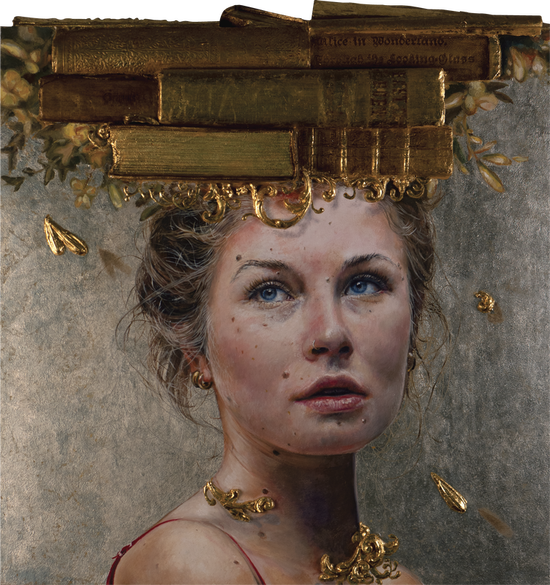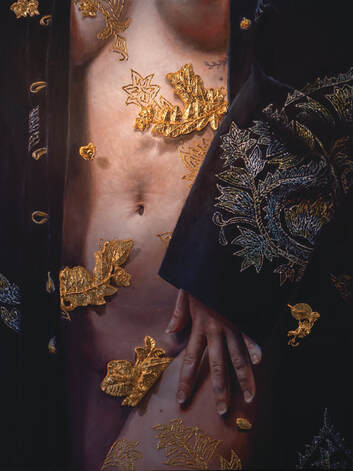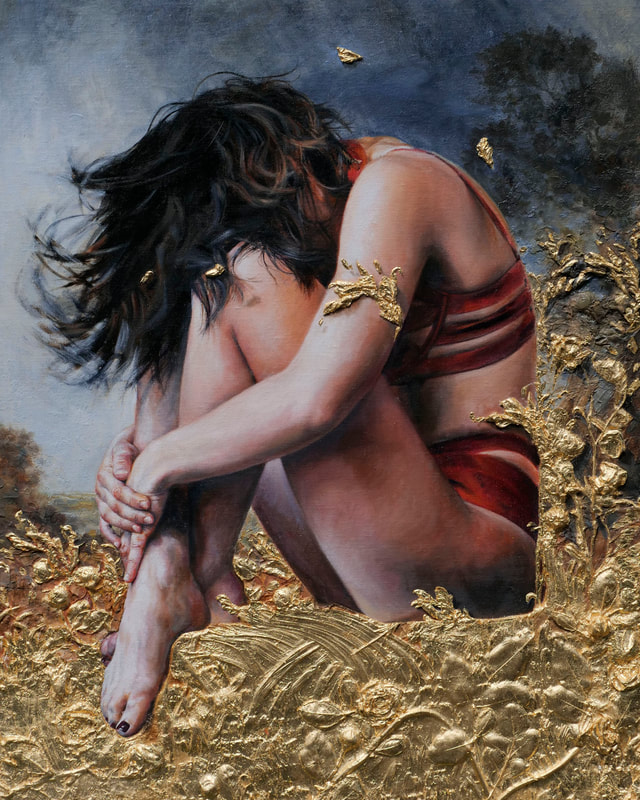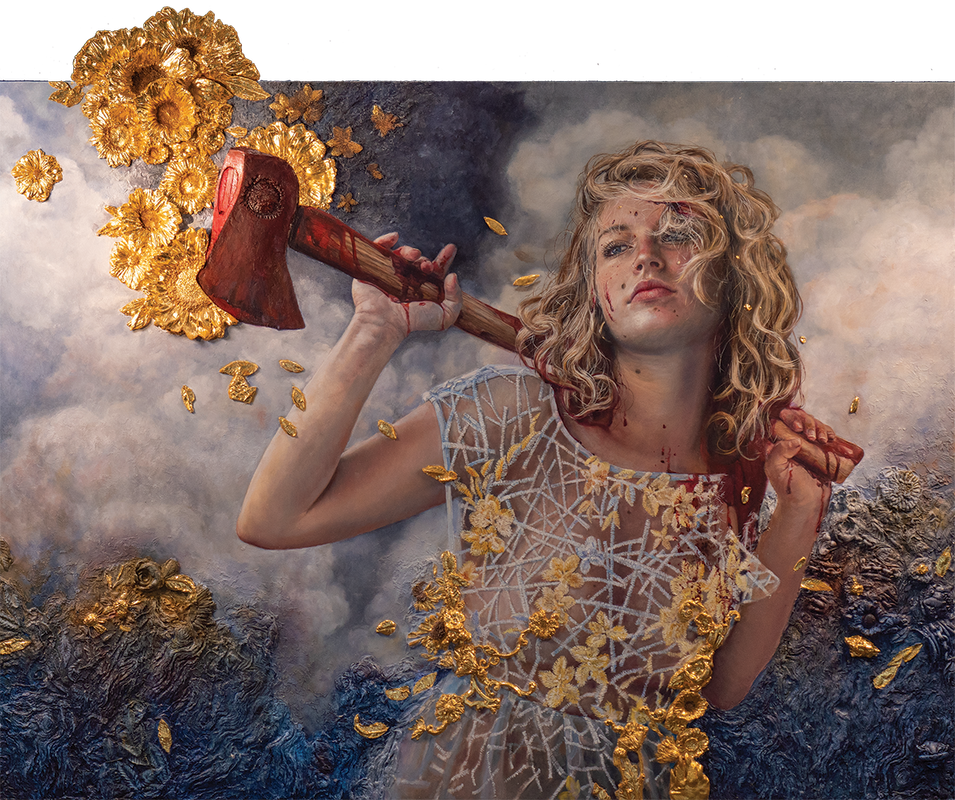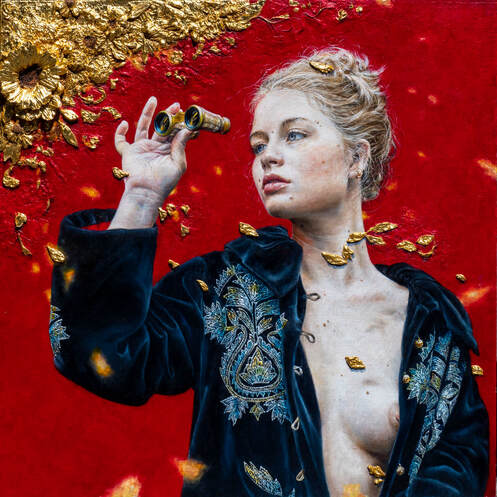An interview by Carmen Line Hust as seen in Articulate Magazine
From where is your drive generated, in regards to your artistic work?
As an insecure child, I was driven to escape through any kind of creativity. I have always liked the “making” of things. Drawing was the easiest for me at the time and I was encouraged. My grandmother took me to museums, and I was immediately attracted to old master paintings. I have spent a good portion of my life trying to achieve that kind of look into my painting. Now I want to express more than just technique. I deeply want to share stories of my own or others. I want my paintings to be timeless.
From where is your drive generated, in regards to your artistic work?
As an insecure child, I was driven to escape through any kind of creativity. I have always liked the “making” of things. Drawing was the easiest for me at the time and I was encouraged. My grandmother took me to museums, and I was immediately attracted to old master paintings. I have spent a good portion of my life trying to achieve that kind of look into my painting. Now I want to express more than just technique. I deeply want to share stories of my own or others. I want my paintings to be timeless.
How did you develop your artistic vocabulary?
This evolved over decades. However more recently I have been expressing my feelings about vulnerable or powerful women. I am examining emotions of both heartbreak and strength in my work.
Do you work with a project-minded approach, or does the themes of your work evolve in a more dynamic way?
I usually have an image in mind with a particular model and attire inspired by a story from my past or something that touches me from the media. Once I start a photoshoot though, it becomes more of a collaboration. The model and I play around until I think I have the image that screams out at me to be painted. Once in the studio I arrange the three-dimensional parts I have gleaned from my house or my environment. Then, at that point, there is more evolution that takes place before it goes to the panel. So possibly both.
This evolved over decades. However more recently I have been expressing my feelings about vulnerable or powerful women. I am examining emotions of both heartbreak and strength in my work.
Do you work with a project-minded approach, or does the themes of your work evolve in a more dynamic way?
I usually have an image in mind with a particular model and attire inspired by a story from my past or something that touches me from the media. Once I start a photoshoot though, it becomes more of a collaboration. The model and I play around until I think I have the image that screams out at me to be painted. Once in the studio I arrange the three-dimensional parts I have gleaned from my house or my environment. Then, at that point, there is more evolution that takes place before it goes to the panel. So possibly both.
What is your preferred media and why?
I love painting in oil paint. I have not been able to achieve the same satisfaction from any other painting medium. In the past few years, I have been adding plaster and gilding. Also, very satisfying.
I was inspired by a trip to The Art Institute of Chicago several years ago. I admired a painting called Saint George and the Dragon by Bernat Martorell. He created a relief within his painting made with fresco-secco plaster and gilded in some select areas. This was my “Ah-Ha” moment where I felt I could enhance my figurative painting which I love, with casting texture that I had been testing for a few months.
In each painting I have thin handmade casting molds created from plant life, specimens, and various possessions I’ve collected. They are carefully adhered to each painting, and I have selectively either painted these casts or gilded them depending on how I wish the texture to interact with the figurative oil painting.
I love painting in oil paint. I have not been able to achieve the same satisfaction from any other painting medium. In the past few years, I have been adding plaster and gilding. Also, very satisfying.
I was inspired by a trip to The Art Institute of Chicago several years ago. I admired a painting called Saint George and the Dragon by Bernat Martorell. He created a relief within his painting made with fresco-secco plaster and gilded in some select areas. This was my “Ah-Ha” moment where I felt I could enhance my figurative painting which I love, with casting texture that I had been testing for a few months.
In each painting I have thin handmade casting molds created from plant life, specimens, and various possessions I’ve collected. They are carefully adhered to each painting, and I have selectively either painted these casts or gilded them depending on how I wish the texture to interact with the figurative oil painting.
Are your works pre-thought or do they emerge by their own? If your works are pre-thought, how do the idea emerge and how do you select which ideas proceed, and which not?
They are very much pre-thought. Although, once you blend a model in, things can grow into more of a collaboration. I do not know until I get into the studio whether they will work for me or not.
They are very much pre-thought. Although, once you blend a model in, things can grow into more of a collaboration. I do not know until I get into the studio whether they will work for me or not.
Adding the three-dimension aspects to the work also means adding a considerable amount of planning. Sometimes it’s just overwhelming desire to see that “thing” I want to see painted.
One extremely emotional painting Hickory/Reckoning was to present a Lizzie Borden superhero who is victorious over people who have abused or harassed other people. I was a third into the painting when the Ukrainian war broke out. Here I was painting blood and gilded sunflowers. I was very sad. I had to put it down for a few months. Then I heard of all the atrocities being committed in Ukraine and then in Iran. I knew then that out of respect for them and myself I needed to finish the painting and so I did. Some paintings represent strong emotions that I feel, and I want to preserve as art.
What do you believe is a key element in creating a good composition?
One that keeps your attention focused on the art and keeps your eyes circulating on the painting. A good composition helps to spark some feeling or emotion as well.
If you should mention an artist(s) that influence your work/draws you attention, who would it be and why?
Gustav Klimt and Antoni Guadi right now. I would add there are several highly talented, intriguing artists pushing the boundaries of figurative painting today.
One that keeps your attention focused on the art and keeps your eyes circulating on the painting. A good composition helps to spark some feeling or emotion as well.
If you should mention an artist(s) that influence your work/draws you attention, who would it be and why?
Gustav Klimt and Antoni Guadi right now. I would add there are several highly talented, intriguing artists pushing the boundaries of figurative painting today.

